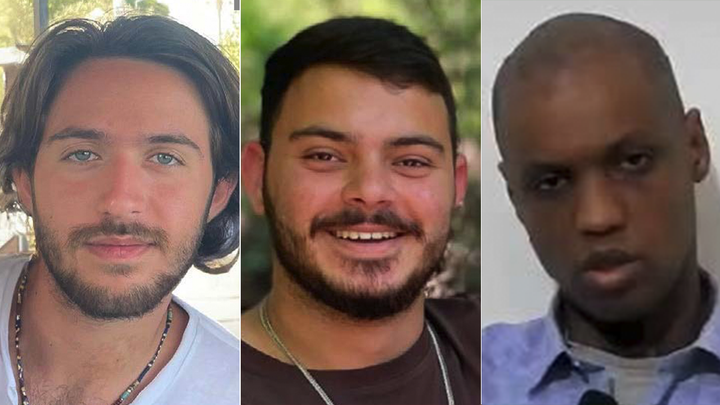Six Israeli hostages were released by Hamas on Saturday, marking the largest single-day release under the current ceasefire agreement. The freed captives—Tal Shoham, Omer Shem Tov, Omer Wenkert, Eliya Cohen, Avera Mengistu, and Hisham al-Sayed—returned to Israel after prolonged and grueling captivity.
A Painful Return
The released hostages were handed over to the Red Cross before being transferred to Israeli forces. However, their return was marred by Hamas’ public displays, where five of the six were paraded on stage in Gaza, presented as trophies in front of cheering crowds. The men appeared frail, with visible signs of severe weight loss.
Shoham, Shem Tov, Wenkert, and Cohen were kidnapped during the October 7 attack and spent over 500 days in captivity. Mengistu and al-Sayed had been held for nearly a decade after entering Gaza independently in 2014 and 2015.
Despite their return, the hostage ordeal is far from over. Israel estimates that 63 hostages remain in Gaza, including the bodies of at least 36 individuals confirmed dead. Hamas has continued to leverage hostages in negotiations, leading to growing frustration among Israeli families still awaiting their loved ones’ return.
Propaganda and Psychological Warfare
Hamas’ treatment of the released hostages underscored its use of psychological warfare. During the release ceremony in Nuseirat, hostages were forced to wear imitation IDF uniforms—an apparent effort to reinforce Hamas’ false narrative that all Israeli men are combatants. Some hostages were seen complying with directives from armed Hamas members, including gestures of submission.
Al-Sayed’s release stood in contrast to the others, as Hamas chose to forego a public ceremony. The terror group framed this decision as a gesture of respect for Israel’s Arab community, despite having detained him without cause for nearly a decade.
Family Reunions and Ongoing Suffering
Following their release, the hostages were airlifted to medical facilities in Israel, where they were reunited with their families. The emotional reunions were bittersweet—relief at their survival was overshadowed by the horrors they endured and the uncertainty surrounding those still held captive.
Among those waiting was Shoham’s son, Naveh, who had also been kidnapped on October 7 but was freed in November. Mengistu’s family, who had fought for his release for over ten years, expressed gratitude but also frustration that his case had been neglected for so long.
A Fragile Ceasefire
The hostages were exchanged for more than 600 Palestinian prisoners as part of the ongoing ceasefire negotiations. Despite these efforts, tensions remain high. The release of bodies instead of living captives in prior exchanges has led to accusations that Hamas is manipulating the process to stall further agreements.
With this phase of the deal concluding, the fate of the remaining hostages remains uncertain. Families continue to call for urgent action, fearing that further delays could cost lives.
As Israel assesses its next steps, the hostages’ ordeal serves as a grim reminder of the human cost of terrorism and the ongoing battle for justice and security.






